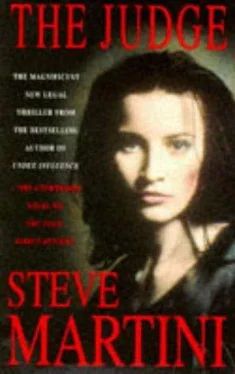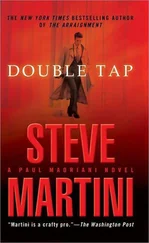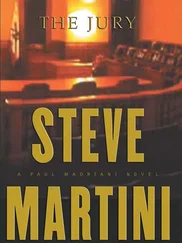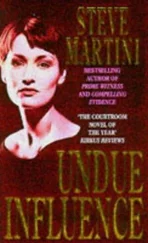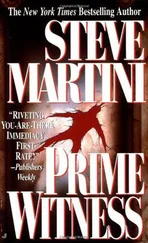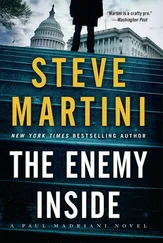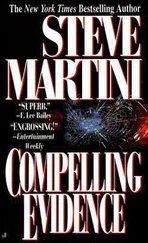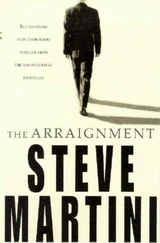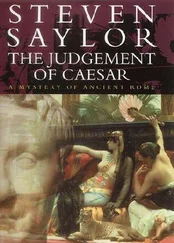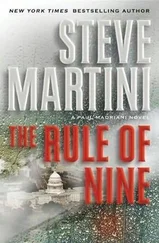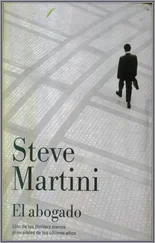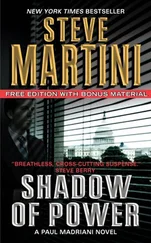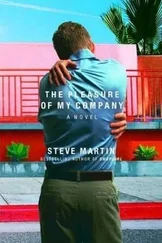Steve Martini - The Judge
Здесь есть возможность читать онлайн «Steve Martini - The Judge» весь текст электронной книги совершенно бесплатно (целиком полную версию без сокращений). В некоторых случаях можно слушать аудио, скачать через торрент в формате fb2 и присутствует краткое содержание. Год выпуска: 2011, Издательство: Penguin Group US, Жанр: Триллер, на английском языке. Описание произведения, (предисловие) а так же отзывы посетителей доступны на портале библиотеки ЛибКат.
- Название:The Judge
- Автор:
- Издательство:Penguin Group US
- Жанр:
- Год:2011
- ISBN:нет данных
- Рейтинг книги:4 / 5. Голосов: 1
-
Избранное:Добавить в избранное
- Отзывы:
-
Ваша оценка:
- 80
- 1
- 2
- 3
- 4
- 5
The Judge: краткое содержание, описание и аннотация
Предлагаем к чтению аннотацию, описание, краткое содержание или предисловие (зависит от того, что написал сам автор книги «The Judge»). Если вы не нашли необходимую информацию о книге — напишите в комментариях, мы постараемся отыскать её.
The Judge — читать онлайн бесплатно полную книгу (весь текст) целиком
Ниже представлен текст книги, разбитый по страницам. Система сохранения места последней прочитанной страницы, позволяет с удобством читать онлайн бесплатно книгу «The Judge», без необходимости каждый раз заново искать на чём Вы остановились. Поставьте закладку, и сможете в любой момент перейти на страницу, на которой закончили чтение.
Интервал:
Закладка:
Stinegold is not as happy with this. “It is possible,” he says.
“Would you be surprised if I told you that records from the county motor pool reveal that nine vehicles were purchased by the county from the same manufacturer, each one the same vintage as the defendant’s county-assigned car, and that seven of these were produced at the same assembly plant, with the same color carpet?”
He gives me no answer.
“Did you know that?” I ask.
“No,” he says.
I have been busy with a special master, a former prosecutor, a lawyer assigned by the court to receive evidence from our own experts in this regard. We have been busy running these vehicles down and collecting carpet fibers.
This opens the door a crack, and I turn to horses.
“So did you find it?” I ask him.
“Find what?” he says.
“The horse whose hair this is?”
He laughs. “No.”
“Did you look?”
“No.”
“Why not?”
“We didn’t see the point,” he says. “We had the hair in the defendant’s house and his car. Besides, as I stated, it would not be possible to trace the hair to a specific horse.”
“Did you check any of the other people who ride at that particular stable to see if there was similar hair at their houses or in their cars?”
“No.”
“Why not?” The lawyer’s bag of bones, all the things the prosecution didn’t do.
“Again, we didn’t see the point.”
“Wouldn’t it have been instructive to know how many horses at that stable might have provided a match to the hair found on that blanket?”
“Not really.”
“Mr. Stinegold, isn’t it a fact that, except for color, and some exotic breeds that have unique textural characteristics, that one horse hair is likely to look very much like another?”
“Color would be a differentiating element,” he says. The one he grasps for here.
“Do you know what color the horse was who dropped the hair found on the blanket?”
“Brown,” he says. “What you would commonly call chestnut.”
“A common color among horses, isn’t it?”
“Objection. The witness is not an expert on horses,” says Kline.
“No. Just what comes out of them,” I say.
“What’s that supposed to mean?” says Kline.
There’s some sniggering in the jury box.
“Hair,” I say. “What were you thinking?”
Kline is left to look at a laughing jury.
“I object, Your Honor. There’s nothing humorous about this.”
Radovich tells me to get on with it.
“Come on, Mr. Stinegold, isn’t it common knowledge that chestnut is not a rare color among horses?”
“Objection,” says Kline.
“Overruled. The witness can answer the question,” says Radovich.
“It’s not rare,” says Stinegold.
“In fact, if we went out today and visited stables in this county, isn’t it likely that chestnut would be the predominant color found in them?”
“It’s possible,” says Stinegold. It is more than that, but I accept the concession.
“And if we collected hair from all of those chestnut horses and gave it to you to examine under your microscope, would you be able to tell us which of those horses was responsible for the hair found on that blanket?”
He smiles. The point is made. “Probably not.”
“Because chestnut horse hair is not that unique, is it?”
“No.”
“The other elements you testified to, the texture, surface structure, and thickness from one chestnut horse is very much like another, isn’t that right?”
“That is probably true,” he says.
“So the hair on that blanket could have come from almost any chestnut horse?”
“They would be similar,” he says.
“Sufficiently similar that you would have a difficult time telling one from another?”
“Perhaps,” he says.
“So that the jury understands,” I tell him, “there’s no way that you can specifically identify the horse hair found in the defendant’s house or his vehicle with the hair found on that blanket other than to say that they look alike, is there?”
“No.”
“Mr. Stinegold, are you familiar with the concept of transference as it applies to the science of trace evidence?”
“I am,” he says.
“Can you explain that concept to the jury?”
He looks at me first as if I’m digging my own grave, as if this is not helpful to our case. Then he turns to the jury.
“Transference is the theory that microscopic evidence from one moving object will, all things being equal, transfer either all or part of itself to another object with which it comes in contact.”
“Sort of like bees pollinating a plant?” I ask.
“That’s a fair analogy,” he says.
“So that if I rub up against you, we would expect that fibers from my clothes would be left on your clothes and fibers from yours would be left on mine?”
“Allowing for differences in fabrics,” he says. “Some might not leave any trace fibers.”
“Of course. But assuming they did, you would expect to find transferred fibers, some cross-pollination?”
He thinks about this, but is already nodding his head.
“Yes.”
“And you believe that this is how the hair in question came to find its way into the defendant’s vehicle?”
“Yes.”
“And into the victim’s apartment?”
“Correct.”
“And onto the blanket used to wrap the victim’s body?”
“That’s right.”
“And did you find anything else on that blanket?”
“A few other fibers, bits of wood, microscopic refuse from the trash bin where the body was found,” he says.
“But in your view the only significant substances detected are the carpet fibers and the horse hair?”
“In my opinion, yes.”
“Was there a lot of hair on that blanket?” I ask him.
“A fair amount,” he says.
“Your Honor, I would like the witness to demonstrate the transference of hair onto the blanket,” I say.
Kline has a problem with this. I have cut several small pieces of nylon carpet, and he objects that they may not match the carpet in Acosta’s car.
“They are close enough for demonstrative purposes,” I argue. “We’re not going to ask the witness to compare samplers of hair and fibers,” I say.
“With that understanding,” says Radovich.
I hand a piece of the carpet to Stinegold. I’ve gathered some horse hair for this purpose in a small envelope, and I hand this to the witness.
“The hair is black in color,” I tell the court. “They should be easily distinguishable from the others on the blanket.”
Stinegold looks at them and agrees with this. He spreads some of the hair on the carpet, wiping it along the cut bristles with his hand.
I have the clerk retrieve the blanket from the evidence cart and hand it to him. It is mauve in color. Stinegold places it in a puffed-up ball on the railing in front of him, part of it draping over the edge and down onto the floor.
He takes one corner of the blanket and wipes it briskly with the carpet, as you would a brush. Then he lays the carpet facedown on the railing and examines the blanket.
“There,” he says. Stinegold holds the blanket out for me to see, a victorious look in his eyes. It is covered with black horse hair in the area that he has rubbed.
“If you have some tape I can show you how we retrieved the samples,” he says.
“That’s not necessary,” I tell him. I pick up the blanket and the piece of carpet from the railing.
Kline is sitting with a self-satisfied smile at his table.
I walk several steps away from the stand, the blanket in one hand, the carpet swatch in the other, before I turn and face the witness in the stand. I have already looked, so I know it is there, before I hold this up for Stinegold to see on the stand-the small swatch of carpet.
Читать дальшеИнтервал:
Закладка:
Похожие книги на «The Judge»
Представляем Вашему вниманию похожие книги на «The Judge» списком для выбора. Мы отобрали схожую по названию и смыслу литературу в надежде предоставить читателям больше вариантов отыскать новые, интересные, ещё непрочитанные произведения.
Обсуждение, отзывы о книге «The Judge» и просто собственные мнения читателей. Оставьте ваши комментарии, напишите, что Вы думаете о произведении, его смысле или главных героях. Укажите что конкретно понравилось, а что нет, и почему Вы так считаете.
